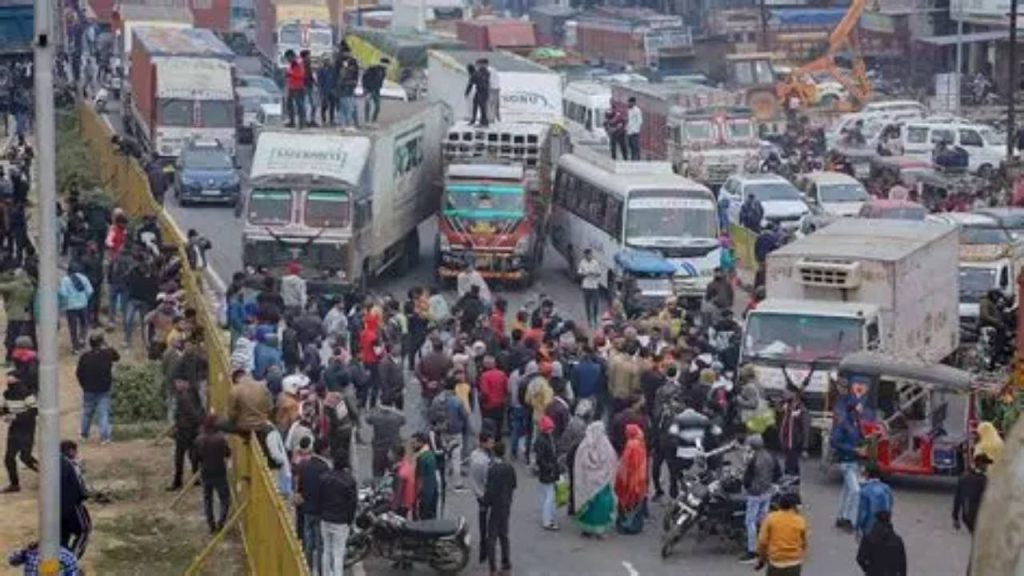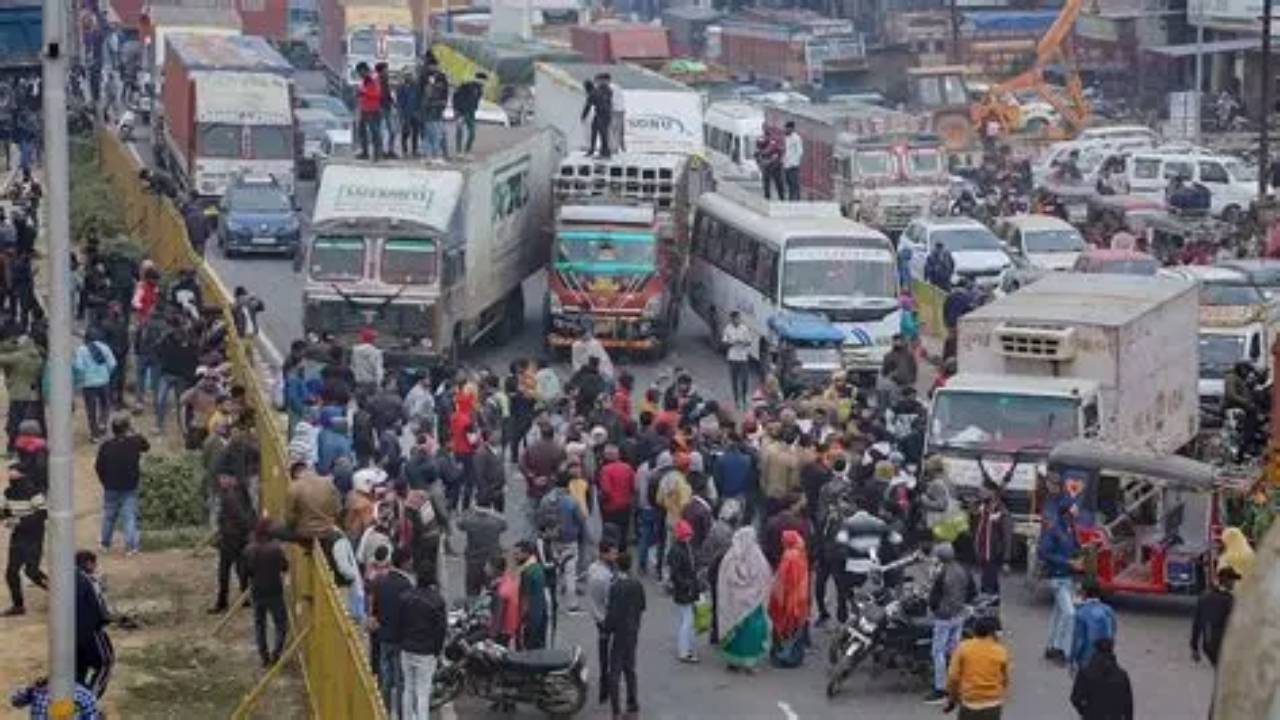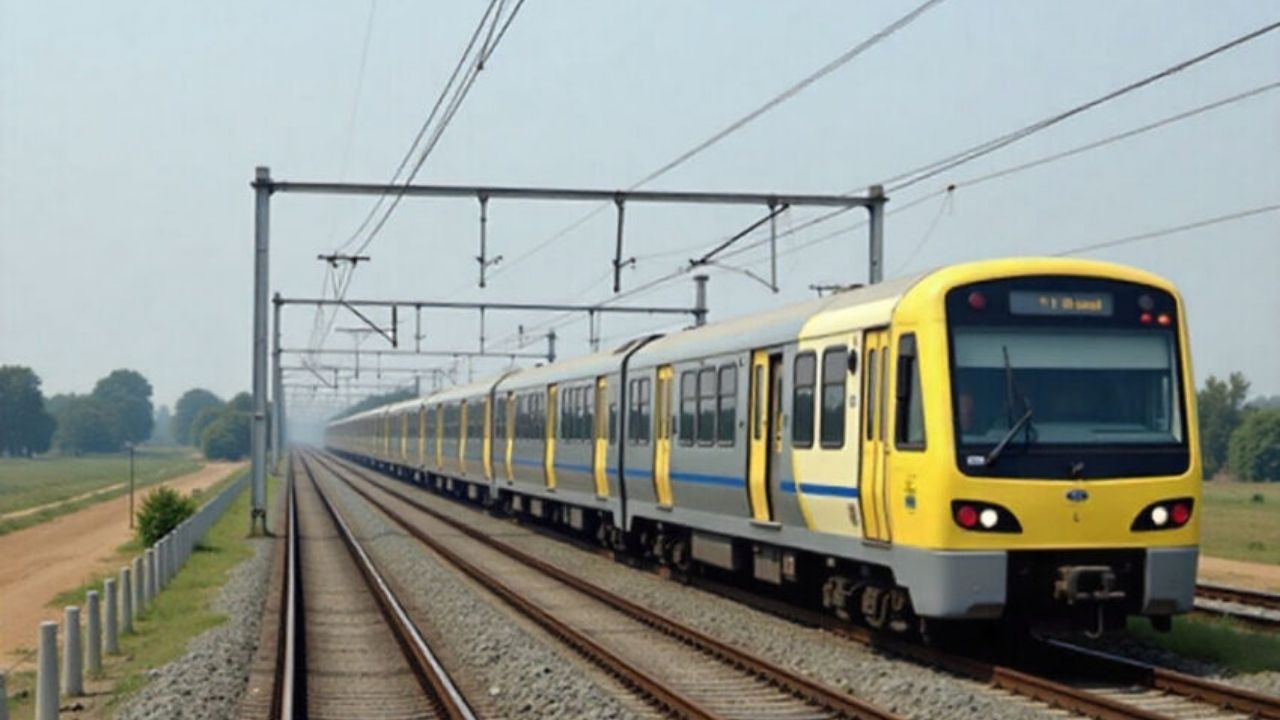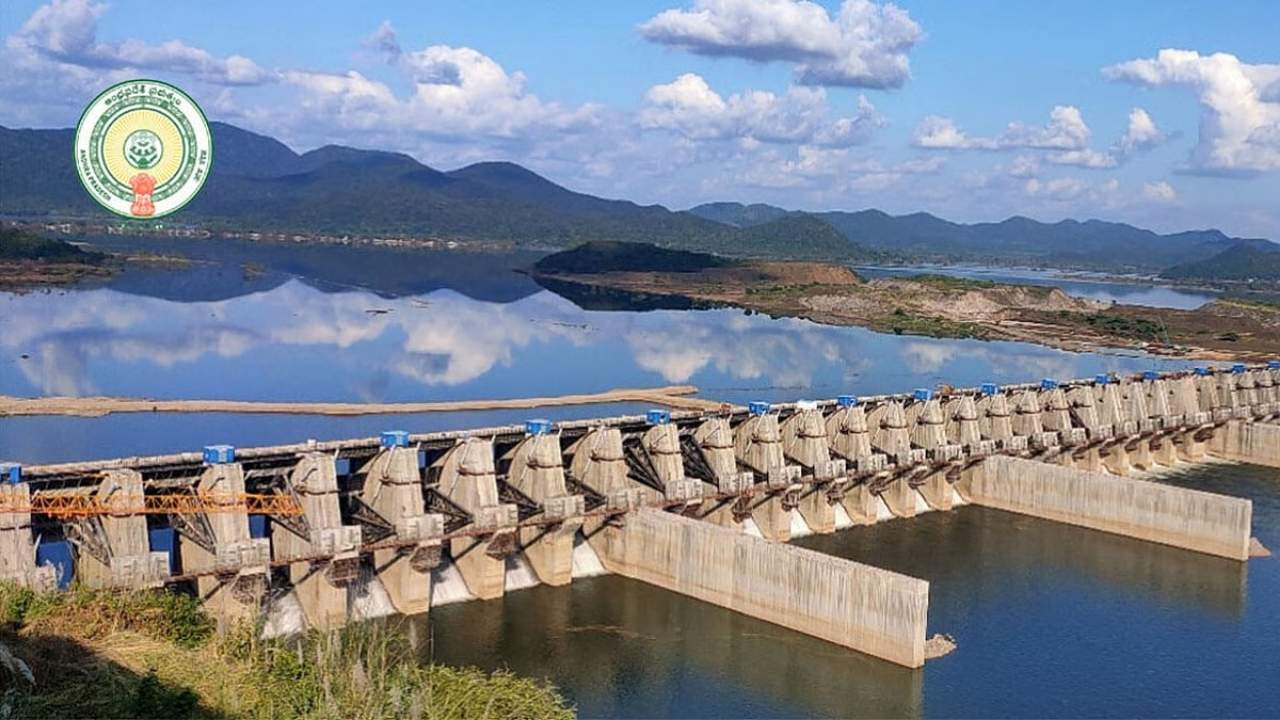The state of Odisha in India has been experiencing severe disruptions in its transport system as thousands of drivers have gone on strike, demanding better working conditions and benefits. The protests, led by the Odisha Drivers’ Mahasangha, have affected the lives of millions of citizens, with buses, taxis, and other vehicles coming to a standstill across the state. While the initial cause of the strike seems rooted in legitimate concerns about driver welfare, the situation has taken a political turn. This has raised questions about the true motivations behind the protests. Are the drivers protesting for their rights, or is there something more at play?

In this article, we’ll take a deep dive into the transport chaos in Odisha, break down the drivers’ demands, look at the impact of the strike on daily life, and explore whether the protest is politically motivated. We’ll also provide insights into the broader implications of the protest on the state’s economy and its residents, offering practical advice for navigating the ongoing disruptions.
Transport Chaos in Odisha
| Key Points | Details |
|---|---|
| Protest Initiation Date | July 8, 2025 |
| Total Number of Drivers | Over 500,000 |
| Main Demands | Pension for senior drivers, rest facilities, legal protection |
| Political Turn | Suspension of strike for Congress leader’s rally |
| Affected Sectors | Transportation, essential goods supply, fuel chains |
| Public Impact | Disruptions to daily commute, increased fuel shortages |
| Official Website for Reference | Odisha Drivers’ Mahasangha |
The ongoing drivers’ strike in Odisha has caused significant disruption across the state, impacting transportation, businesses, and daily life. While the protest began as a legitimate demand for better welfare and working conditions for drivers, the recent political turn has added complexity to the situation. Whether or not the strike is politically motivated, the fact remains that the public is bearing the brunt of these disruptions. It’s crucial for both the government and the opposition to prioritize finding a solution to address the legitimate concerns of the drivers, while also minimizing the impact on the public.
Why Are Drivers Protesting?
The drivers’ strike in Odisha kicked off on July 8, 2025, and it quickly gained traction, with over 500,000 drivers from across the state joining the movement. The main grievances of the drivers are centered on welfare issues that affect their daily lives and working conditions.
The Main Demands
The drivers have put forward six main demands:
- Pension for Senior Drivers: Drivers above the age of 60 are calling for pension benefits to ensure financial security after they retire.
- Inclusion of Auto Drivers in Welfare Board: Currently, auto drivers are not part of the Odisha Motor Transport Drivers and Workers Welfare Board. The drivers demand their inclusion to ensure access to basic welfare schemes.
- Rest Facilities: They want rest sheds with proper toilet facilities every 100 kilometers on major highways, as a basic need for long-distance drivers.
- Legal Protection: Drivers are seeking legal protection from harassment by the public and law enforcement. There have been increasing incidents of physical and verbal abuse against drivers, and they want legal safeguards to avoid such situations.
- Death Benefits: They demand compensation in the case of death or incapacitation while on duty. The drivers believe that if they’re putting their lives on the line every day, they deserve better protection.
- National Drivers’ Day: The drivers propose that September 1 be declared National Drivers’ Day, to honor the vital role drivers play in the nation’s economy.
These demands, while essential to improving the lives of drivers, have been ignored by the state government for months. After repeated requests, the drivers took to the streets and initiated the strike to make their voices heard.
What Has Been the Impact on Odisha?
The drivers’ protest has led to massive disruption in transportation across Odisha, affecting daily commuters, businesses, and essential services. The strike has particularly hit the transport sector hard, with buses, taxis, and goods vehicles remaining off the roads. Here’s a closer look at how the strike has impacted Odisha:
Stranded Passengers and Transportation Woes
With no buses running, commuters in cities like Bhubaneswar, Cuttack, and Berhampur are left stranded. Many people who rely on public transport to get to work or school are struggling to find alternative modes of transport. It has also led to increased pressure on auto-rickshaws, which are often the only mode of transport available during such strikes. However, with many drivers joining the protest, the number of available auto-rickshaws is also reduced.
Fuel Shortages and Supply Chain Disruptions
The transport strike has severely impacted the supply of essential goods, including fuel. Petrol and diesel tankers have not been able to reach fuel stations, leading to long queues and shortages at gas stations. People are worried about fuel running out and are stocking up, which has led to further panic buying. This disruption in the fuel supply chain is having a ripple effect on industries that rely on fuel for their daily operations.
Business and Trade Impacts
With goods vehicles off the roads, supply chains for many essential items, including food, medicines, and other goods, have been severely disrupted. Small businesses that depend on deliveries for inventory are particularly struggling. Moreover, large retail chains are facing challenges in restocking their shelves. The economic loss from these disruptions is estimated to be in the millions of dollars.
The Political Angle: Is the Protest Politically Motivated?
The drivers’ strike initially seemed like a straightforward labor protest. However, recent developments suggest that politics may be playing a role in the ongoing agitation. The situation took a significant political turn when the Odisha Drivers’ Mahasangha decided to suspend the strike temporarily on July 11, 2025, to allow vehicles to move for a Congress party rally in Bhubaneswar, led by Rahul Gandhi.
The Suspension and Its Implications
Prashant Menduli, president of the Odisha Drivers’ Mahasangha, issued a statement urging fellow drivers to allow vehicles carrying Congress supporters to pass without obstruction. This sudden suspension of the strike raised eyebrows. Why would the drivers suspend their protest for a political rally? Critics argue that this move suggests that the protest may not be purely about workers’ rights, but may also be driven by political motivations.
Accusations of Political Influence
The ruling BJP (Bharatiya Janata Party) has accused the Odisha Drivers’ Mahasangha of using the strike to advance political interests. Bibhuti Bhushan Jena, the state’s Transport Minister, claimed that the protest was being manipulated by political forces. The BJP even accused the Congress party of “exploiting” the drivers’ genuine concerns to further their own political agenda.
On the other hand, the Congress party has retaliated by accusing the state government of delaying action on the drivers’ demands for political reasons. The back-and-forth between the BJP and Congress has added a layer of political complexity to what started as a labor dispute.
How To Navigate the Disruption?
As the situation continues to evolve, here are some practical tips for residents and businesses affected by the ongoing strike:
For Commuters
- Look for alternatives: Consider using carpooling apps like Ola and Uber. They may still be operating, though in limited capacity.
- Plan ahead: Leave earlier than usual to avoid delays due to transportation issues.
- Stay updated: Keep an eye on local news for any updates on the strike, as the situation can change quickly.
- Use bicycles: If your destination is within a reasonable distance, consider biking. It’s a sustainable and practical alternative.
For Businesses
- Stock up on essentials: Ensure that you have enough inventory to last through any extended disruptions.
- Remote work: If your business is impacted by transportation issues, consider shifting operations online temporarily to minimize the effects.
- Diversify suppliers: If possible, work with suppliers who are not affected by the strike or can provide alternative delivery methods.
Passengers Left Stranded Amid Odisha’s Ongoing Fuel Crisis and Drivers’ Strike
Odisha Faces Major Transport Disruptions as Drivers’ Association Calls for Ceasework
Frequently Asked Questions
Q: What is the main reason behind the drivers’ strike in Odisha?
A: The strike is primarily about improving the working conditions and welfare of drivers, including demands for pensions, rest facilities, and legal protection.
Q: How long will the strike last?
A: The strike is indefinite, but its duration will depend on the government’s response to the drivers’ demands and the political situation surrounding it.
Q: Is the strike affecting only public transport?
A: No, the strike is affecting goods transport as well, leading to disruptions in supply chains for essential goods.
Q: Is the protest politically motivated?
A: There are accusations from both the ruling and opposition parties that politics is playing a role in the protest, especially after the temporary suspension of the strike to facilitate a political rally.





